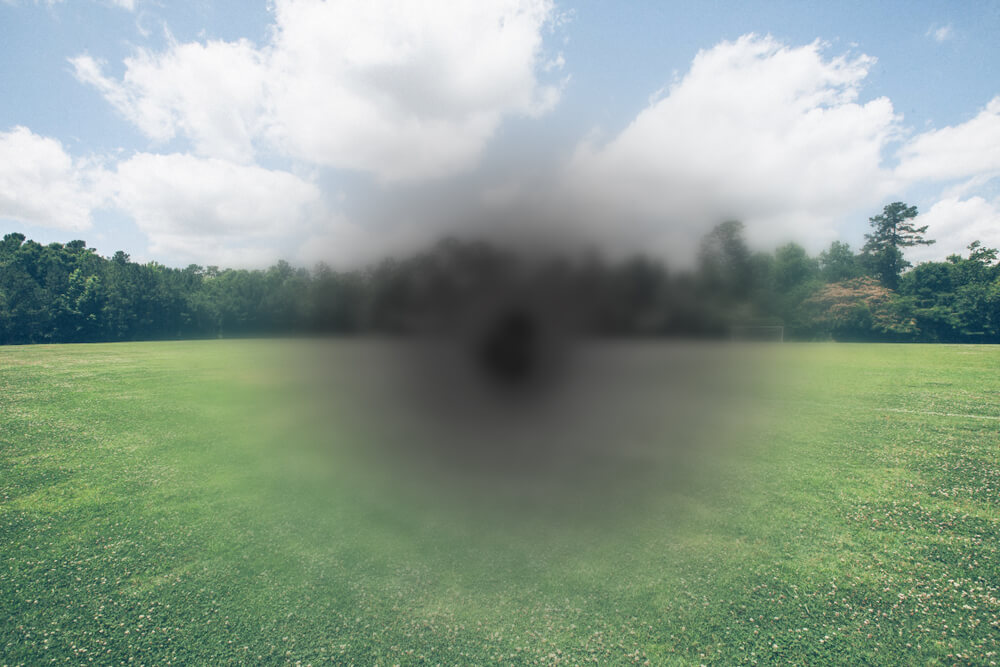If you are concerned about macular degeneration vision loss and have questions about how long it takes to lose vision with macular degeneration, this article can help. After offering information about the types and stages of age-related macular degeneration (AMD), including a timeline of disease progression, we explore AMD treatment options and how certain interventions and treatments can help slow disease progression.

Age-related macular degeneration vision loss is the leading cause of blindness in people 50 and older. AMD interferes with the eye’s ability to distinguish shapes and the details of objects. AMD is characterized by a deterioration of the retina (the inner layer of nerve tissue at the back of the eye) and the choroid (the white outer layer of the eye), leading to this loss of sharpness of vision.
People with early-stage AMD may not have any obvious macular degeneration vision loss symptoms. At the same time, those with later stages of AMD will find that engaging in normal life activities like reading, watching TV, or driving becomes difficult or even impossible.
Dry AMD is the most common form of macular degeneration. It is a serious eye disease that can result in significant vision loss and even functional blindness, for those whose disease progresses beyond the early stages.
Since early-stage dry AMD doesn’t produce symptoms like vision loss, It first comes to light when diagnosed by a physician during a comprehensive eye exam. The AMD diagnosis is based on the eye doctor’s observation of small-to-medium-sized deposits, known as drusen, on the patient’s retina. No pigment changes are present at this stage.
Depending upon a person’s risk factors, the chances of an early-stage AMD patient’s disease progressing to more severe stages vary widely, from next to 0% to over 50%.
During intermediate-stage age related macular degeneration, an eye exam will reveal that the drusen are larger and more numerous. The doctor may notice changes to the retinal pigment epithelium (RPE) layer, which maintains the health of the retina.
Most people experiencing intermediate-stage AMD still do not have symptoms. However, some may start to see mild distortion in their central vision, or have trouble adjusting their vision when going from a brightly lit area to one that is dimly lit. They may also experience difficulty seeing in low light situations.
Whether or not a person with intermediate-stage AMD progresses to a later-stage disease depends on the size of the drusen and whether they appear in one or both eyes. If a person has large drusen in both eyes, there’s a 26% chance they’ll develop a more serious disease within five years of diagnosis. If they have large drusen in only one eye, the odds of disease progression drop significantly to just over 6%.
In the third phase of dry AMD is characterized by loss of retina cells, resulting in blind spots. These areas are called “geographic atrophy.” Vision is still preserved if the areas of atrophy are not in the center of the macula. However, geographic atrophy that involves the center of the macula will cause central blind spots. Eventually, the person may not be able to see objects at all when they look directly at them and won’t be able to recognize faces.
Going from early AMD to the advanced stages with geographic atrophy usually takes many years, so it does not occur overnight.
A small percentage of dry AMD sufferers — anywhere from 10-to-15% — will develop wet AMD. With wet macular degeneration, abnormal blood vessels grow underneath the retina and bleed or leak fluid. This can happen extremely quickly. In fact, the effects of wet AMD can progress so quickly that symptoms can manifest in as little as one day. If wet AMD goes untreated, severe and permanent vision loss can occur in a matter of weeks.
While there is no way to completely prevent AMD, there are some steps you can take to increase your chances of reducing the impact of AMD vision loss.
If you have been diagnosed with AMD, the internationally recognized AMD experts at Mid Atlantic Retina can help. Our macular degeneration doctors not only provide the latest therapeutic approaches to treat AMD, but we stay on the cutting edge of new discoveries through our intimate involvement in the most important AMD-related clinical trials. Through our AMD Center of Excellence, Mid Atlantic Retina’s physicians have been dedicated to treating patients with retinal diseases for over 50 years.
Visit us online to learn more about AMD and the personalized services we provide for each patient.